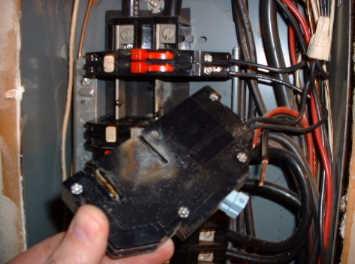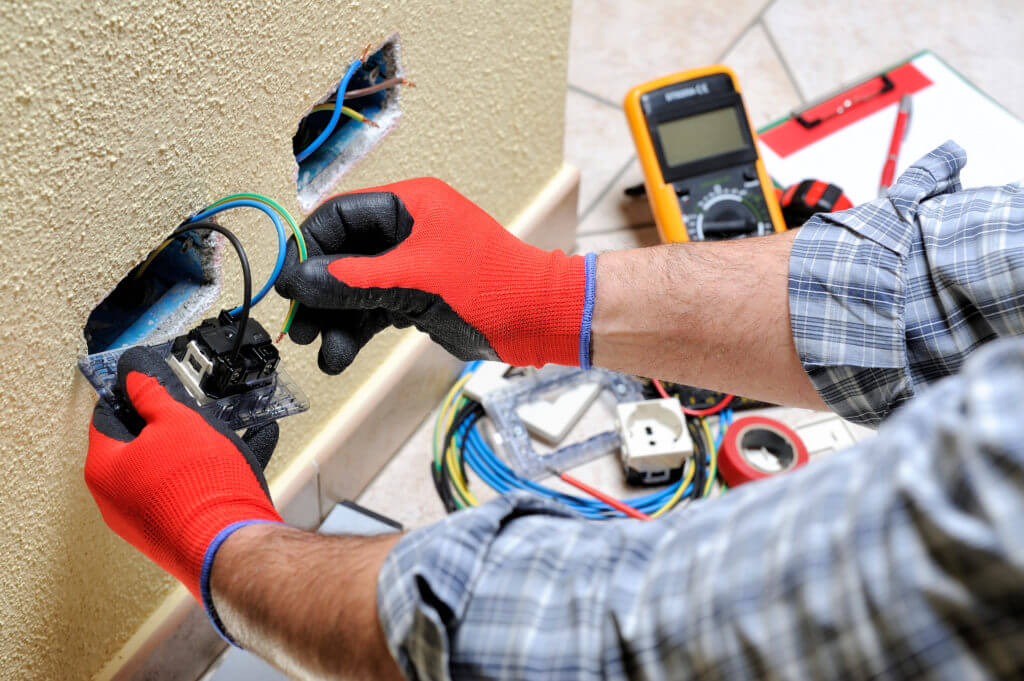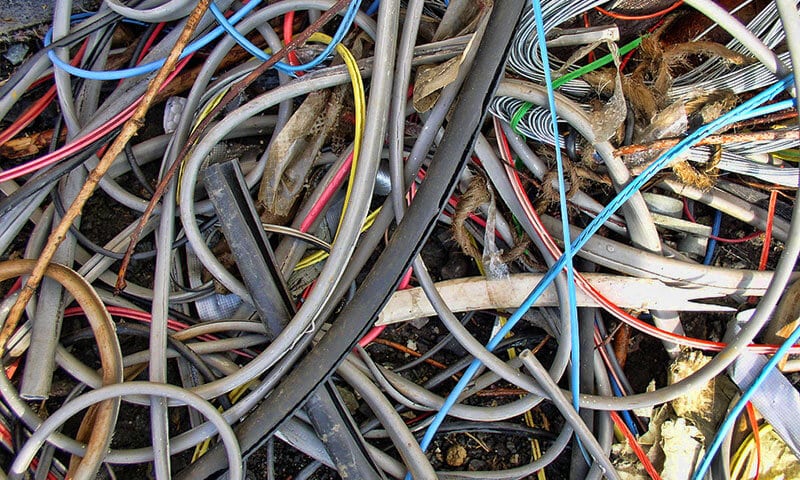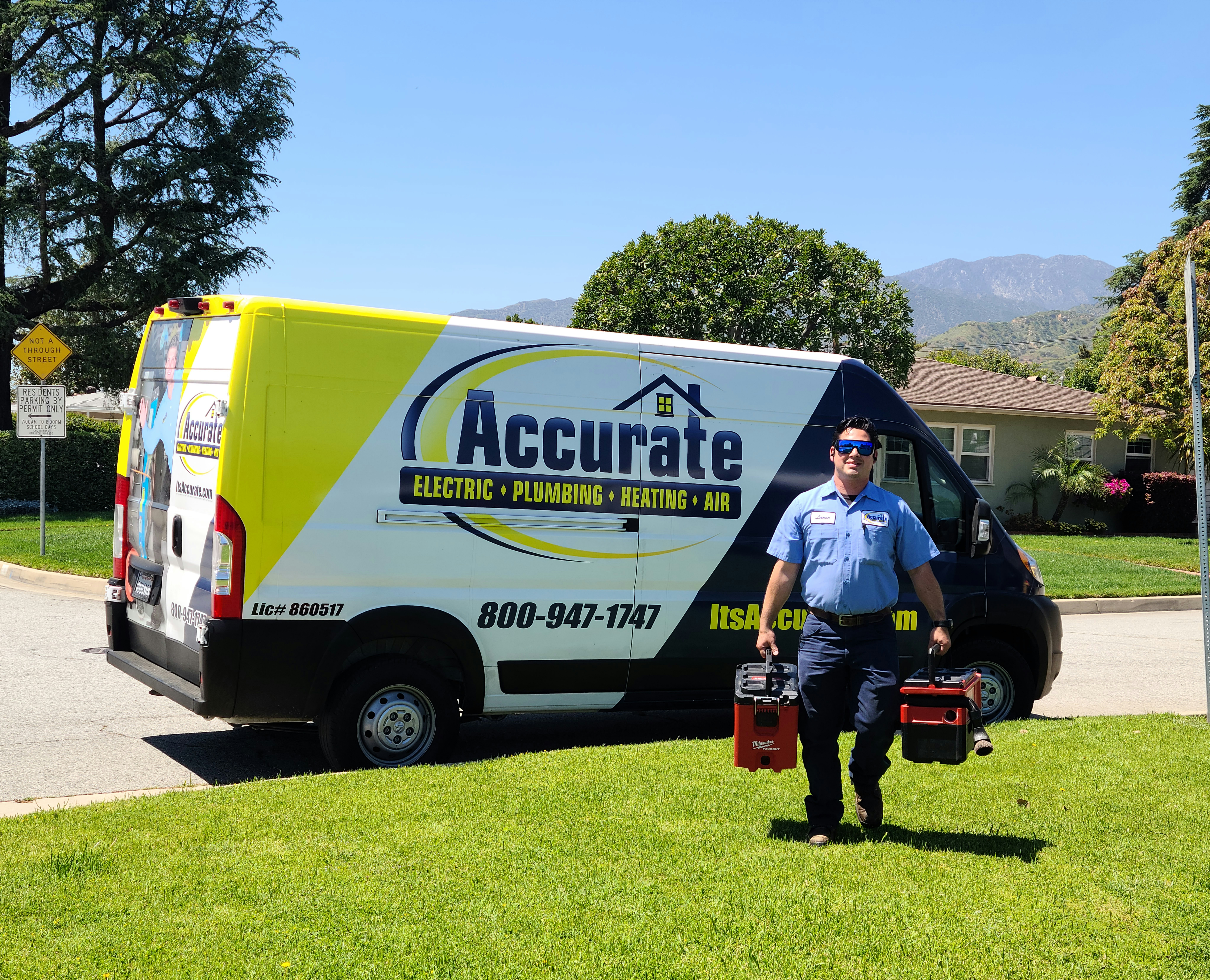The simplest way to understand your home electrical system is to think of it as an elaborate subway system for electrical current. Your home’s electrical system is constantly commuting power at obviously incredible speeds to many calculated destinations. The trip starts at the power company and it ends in your living room in your television, your floor lamp, or even when Siri speaks.
Like any mass transportation system, there is wear and tear either from the trains riding daily, the tracks wearing down, and even the different stations that direct where the electrical current gets on and gets off. All of these components that make up your electrical system have different periods of longevity. Some last for a long time and others need to be replaced because of the different variables and elements at work. Thanks to technology, there are ways to monitor and document the usage of your home electrical wiring system, but here are the main components that direct the mass transportation of electric current throughout your home.
NOW BOARDING: THE POWER COMPANY
Your power company produces the electrical current that enables you to have a functioning home. Without your power company, you wouldn’t be able to open your garage, use a heating pad, watch television, or enjoy a lava lamp (if they still make those). The electrical current starts here and is dropped off at your meter, which is first checked and documented, kind of like customs if you go international.
METER

Most meters are installed on the exterior of your home and have a lifespan of about 30 years. These days, as technology keeps advancing, there are many digital meters now however their life span is only 15-20 years. They don’t make them like they used to, but they make them smarter. Here is where your electrical power is measured as it goes into your home.
Signs of Failure: If you notice your electrical bills are inconsistent or extremely high, one of the first things that you should have checked is your power meter to make sure the readings are accurate (pun not intended… yet). If you don’t do anything you could be paying the power company more than your fair share (pun intended)!
MAIN PANEL
This is the Union Station for your home’s electrical system. Here the main electrical supply is divided up into different circuits that will eventually lead your Amperage (a measurement of the strength of electrical current) to calculated destinations. You can tell how much power is being utilized for your home by looking at your main panel’s total amperage. Most homes function efficiently at about 200 amps. The amps are transported in different circuits to different rooms and appliances through your wiring.
Signs of Failure: If your main panel develops corrosion or has a charring, you may need to have a replacement. Sometimes burning develops. Poor performance from interior and exterior appliances can be a clue about how the panel is functioning and if you ever sense a burning smell from the panel you should address this immediately.
If you don’t take action by repairing or replacing your damaged panel, your entire electrical system and home electrical wiring system could be at risk. This is how fires begin. With all of us living in Los Angeles County and Orange County, we should know how important it is to keep our families and our neighbors safe from fire risk.
CIRCUITS

The different circuits labeled on your panel usually tell you what room or what big appliance the current will travel to. These are the subway stations to the so-called electrical neighborhoods of your home. You may have multiple circuits for one room depending on the size or the amount of power that is needed to support all the appliances. Your kitchen may function either on one circuit or have two.
Circuits also have fuses that help cut off the power to wiring if there is a potential risk factor sensed.
A fuse will control the flow of current so if a circuit overloads, the fuse will blow to stop the electrical current from going in order to avoid electrocution or possible fire risk. When a fuse breaks or blows it is important to replace that fuse with the proper amperage so it can handle the amount of electrical current that is supposed to go through the breaker.
Signs of Failure: If a breaker continuously trips or short circuits, you may have to check the circuit or have it replaced. Excessive heat can cause circuit failure and if the circuit can’t trip off and stop the electrical current it can cause severe danger. With no calculated direction for the electrical current, the flow can be unpredictable and dangerous.
WIRING
Once your electrical current has got on the right train, the track is non-stop. Your home’s electrical wiring system transports the electrical flow to all the outlets in all of your rooms and lighting. Your wiring is insulated with materials to avoid exposure. A ground wire acts with the circuit breaker to detect any moisture or frayed parts of the wiring providing less resistance in case the electrical current is not going where it’s supposed to. If moisture is detected a ground wire enables the electrical current to go straight to the ground to avoid electrocution.
Typically copper wiring can last for 100 years, but what makes wiring go faulty or fail is the material around the wiring used for protective insulation.
Signs of Failure: Excessive heat coming from appliances can mean the wiring could be loose or unprotected from insulation. If you hear popping or cracking this could mean you have wiring exposed where electrical current is jumping the wire.
Chewed wires also indicate rodents are mugging your wiring here and there. If you find your lights dimming quite a bit this could mean your wiring is also damaged or failing.
Failure to take action could result in overheating or even burning your appliances out. What’s worse is that if a wire is exposed there’s no telling what the electrical current could do or if it will ignite anything within your walls or home.
SWITCHES, GFCIs, and AFCIs

Before your electrical current gets to its final destination, it has to pass through your outlets and be allowed to pass through by your switches.GFCIs (Ground Fault Circuit Interrupter) outlets are safety outlets used in rooms that have excess moisture like a kitchen or a bathroom. Even garages and some spots near your swimming pool have these kinds of outlets. They include a test button and a reset button but these are made to detect any kind of moisture and trip to stop any unwarranted electrical current from exiting the outlet to avoid electrocution.
AFCIs are ground faults to protect against water or metal shorts when the electrical current ‘Arcs’ out from the wire. This arc is considered a jump, which a GFCI cannot detect. If you were digging into the ground and your shovel punctured a wire, the AFCI would trigger to shut off the electrical current to protect the unpredictable electrical flow.
Switches enable the flow to come from the outlet to your appliance or lighting. These outlets and switches can typically last about 30 years.
Signs of Failure: If your switches don’t work or you are finding water near the outlets and they are still allowing electrical current to the appliance, you should definitely have them tested. If they are not actively being protective you, your family, and your guests could be in danger.
FINAL DESTINATION
Once your electrical flow has reached your lighting, appliances or chargers this concludes the commute from the power company. There are devices that can be used to control when your electrical current stops and starts that don’t involve you flipping a switch. You can look into timers, alarms or even motion-sensing technology, which can dictate when electrical current can be applied to your lighting, or turn on appliances.
GENERAL FAILURE
Home electrical systems in Glendora do eventually deteriorate over time. Some of this deterioration comes from mechanical wear and tear of circuit breakers, extreme temperature cycles, dust and debris build-up from outside, and condensation. Your electrical system really is a mass transportation system of the electrical current so if something does fail it could have an immense effect on other components involved.
MONITORING YOUR SYSTEM
With new technology starting with your power meters and your electrical panel, there are systems that can collect data about what and how you are using your electricity on a regular basis. This data can produce reports to let you know where you could possibly save energy and what you could be at risk for future failure.
By studying this data and understanding the age of your electrical systems’ components you can prepare for or prevent unexpected breakdowns. Our professional electricians at Accurate can help you track your data and explain your options when it comes to monitoring your electrical system. Let’s enable some connectivity and start the conversation.





